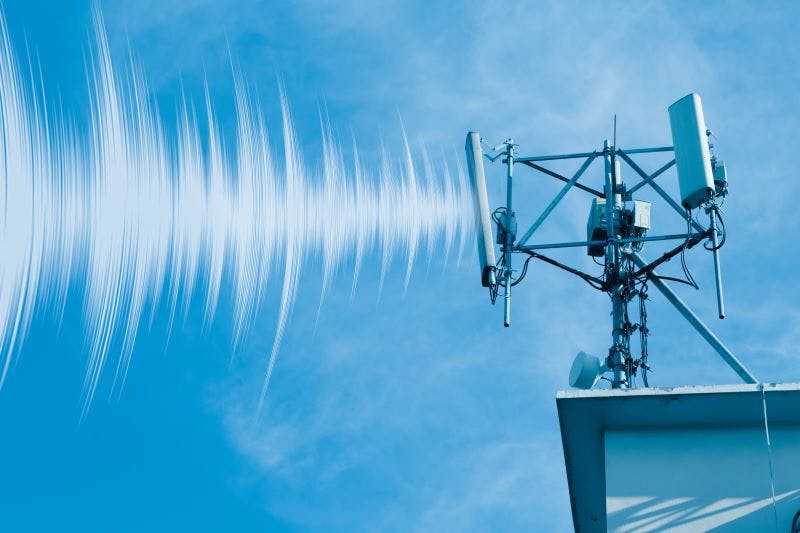Home


Resource Center
Estimated Reading Time: 6 minutes
Every discussion of cell signal strength involves dB and dBm, but what do these measurements actually mean? Whether you’re troubleshooting poor reception or planning a signal booster installation, understanding these units is crucial. Here’s a straightforward explanation of the difference between dB and dBm, and why they matter for your overall cellular connectivity.
What Is a dB?
The abbreviation dB refers to decibels. A decibel reading signifies the amount of increase or decrease in a signal.
Decibels are helpful for determining the amount of signal strength produced by an amplifier system and how much signal will be produced by the system once it’s installed.
The amount of signal that would be produced by installing an amplifier can be calculated by taking the signal strength of a site and adding the amount of gain (expressed in dB) from the amplifier. The resulting figure will represent the indoor cellular strength you’d be able to receive after installing an amplifier. See below.

What is dBm?
The abbreviation dBm stands for decibel milliwatts. It refers to the amount of power that an antenna or amplifier is able to produce, or how much signal is present at a site.
Decibel milliwatts are, as the name suggests, measured relative to milliwatts. It is a measure that’s often used to determine cell phone signal strength at a site.
- A strong signal is one of around -70dBm or higher
- A weak signal is around -100dBm or lower
Note that dBm and dB measure entirely different things. There’s an often repeated ‘formula’ that dBm = dB+30, so 0dB is 30dBm. This is oversimplified and incorrect.
dB is a measure of relative power and cannot be converted into watts. You can use dB as a tool to measure the difference between two dBm figures. The two dBm that are being compared can be converted into watts, but dB cannot be.
Understanding the meaning of the two measurements and what they are used for is essential if you wish to understand how cellular signal boosters work.

Higher Means Stronger: The Power of Logarithmic Scales
It’s easy to underestimate how strong a signal is when you’re looking at a decibel reading.
Both dB and dBm are logarithmic, not linear. This means the way most of us think about magnitude doesn’t apply.
An increase from -80 dB to -77dB may not sound like a lot since it’s an increase of just 2.4% on a linear scale, but it’s a much bigger difference on the dB scale.
Logarithmic scales are used to make it easier to represent very large numbers on a convenient scale. In the case of dB, each increase of three dB means that the signal strength has doubled, as shown in this chart below:

Signal Strength and Your Cell Phone
Most cell phone users judge the strength of their phone’s signal by the number of bars they see. But unlike a dB measurement of signal strength, these bars don’t tell you much.
Unfortunately, there’s no fixed standard for what ‘four bars of signal’ means among mobile phone manufacturers. One person could have their phone showing one bar on the signal strength reading and still be able to make calls and receive text messages. Another person could see two bars and have their SMS messages stuck on “sending” for several minutes.
Instead, users can get an accurate idea of the strength of a cellular signal by unlocking the diagnostic tools found on their phones. This guide to putting your phone into test mode works for most iOS and Android devices. This allows you to access tools that show the signal’s strength in dB, which is something that integrators can work with more easily.
As was previously mentioned, the dB scale is logarithmic, so an increase of 3dB means the power has doubled. An increase of 6dB is enough to approximately double the signal strength of a cell tower or antenna.
3G vs 4G Signal Strengths
For the most part, desirable signal strengths for 3G and 4G are similar, but they are not identical. This is because 3G and 4G operate on different wavelengths.
- Signal strength of -70 dBm is considered excellent for 3G, whereas a reading of -90 dBm would be considered excellent for 4G.
- For 3G service, -110 dBm is considered a ‘dead zone,’ but represents merely a ‘poor signal’ for 4G.
Recommended signal strengths for 5G will be different again. Unfortunately, while the maximum theoretical speeds for 5G are higher, the technology is more susceptible to interference and signal degradation, so some people may experience very poor 5G signals while in office buildings or built-up areas.
How Strong of a Signal Do You Really Need?
In general, your signal strength needs to be around -100 dBm to hold a conversation over a cellular connection.
Signal strength of -100 dBm is also required to transfer data over 4G while maintaining decent speeds. The connection is unlikely to cut out entirely if the strength deteriorates, but speeds would noticeably slow down at -105 dBm.
The ‘dead zone’ for 4G is -120 dBm, but the connection would have to deteriorate to unusable speeds before the signal strength gets that low.
Signal boosters can help improve connection stability and speeds. It’s important to choose the right booster for your property type, however. Commercial retail spaces, offices, and other large venues may benefit from a powerful booster designed to cover the size of the property, and the booster should be installed appropriately for maximum coverage.
In some very large spaces with high foot traffic, it may be necessary to install multiple boosters, each with a different donor antenna, so that all users in the building can have a good experience when using their mobile devices.

The Key Differences at a Glance
As you’ve seen, both dB and dBm are a way of quantifying power and intensity, so let’s focus on the differences:
- dB quantifies the ratio between two values, whereas dBm expresses the absolute power level.
- dBm is an absolute unit, whereas dB is a dimensionless unit.
- dBm is always relative to 1mW, while dB is expressed in watts and can be relative to other powers.
Boosting the Signal
If you work in a building with very poor cell signal, there’s good news: you should be able to fix that issue by using an in-building cell phone signal booster.
As long as there is some signal for the booster to pick up, that signal can be amplified by a booster. If you are able to position an antenna in an area with some signal, that antenna can be used to transport the signal to a booster unit, which can then emit the signal to areas of your building that would otherwise be dead zones.
Cellular signal boosters work with all major networks. They are carrier-agnostic and simply pick up a signal and make it stronger. Unlike network-specific boosting tools such as those sold by Verizon, they do not require an internet connection to use. Cell phone signal boosters can be shared by multiple users and across multiple devices without issues.
If you’d like to see a visual explanation of dB and dBm, check out this handy video.
At WilsonPro, we have helped many business owners increase the stability of cell phone connections for their customers and employees. To see how effective cell phone boosters could be on your premises, contact us today to book an on-site demonstration.


